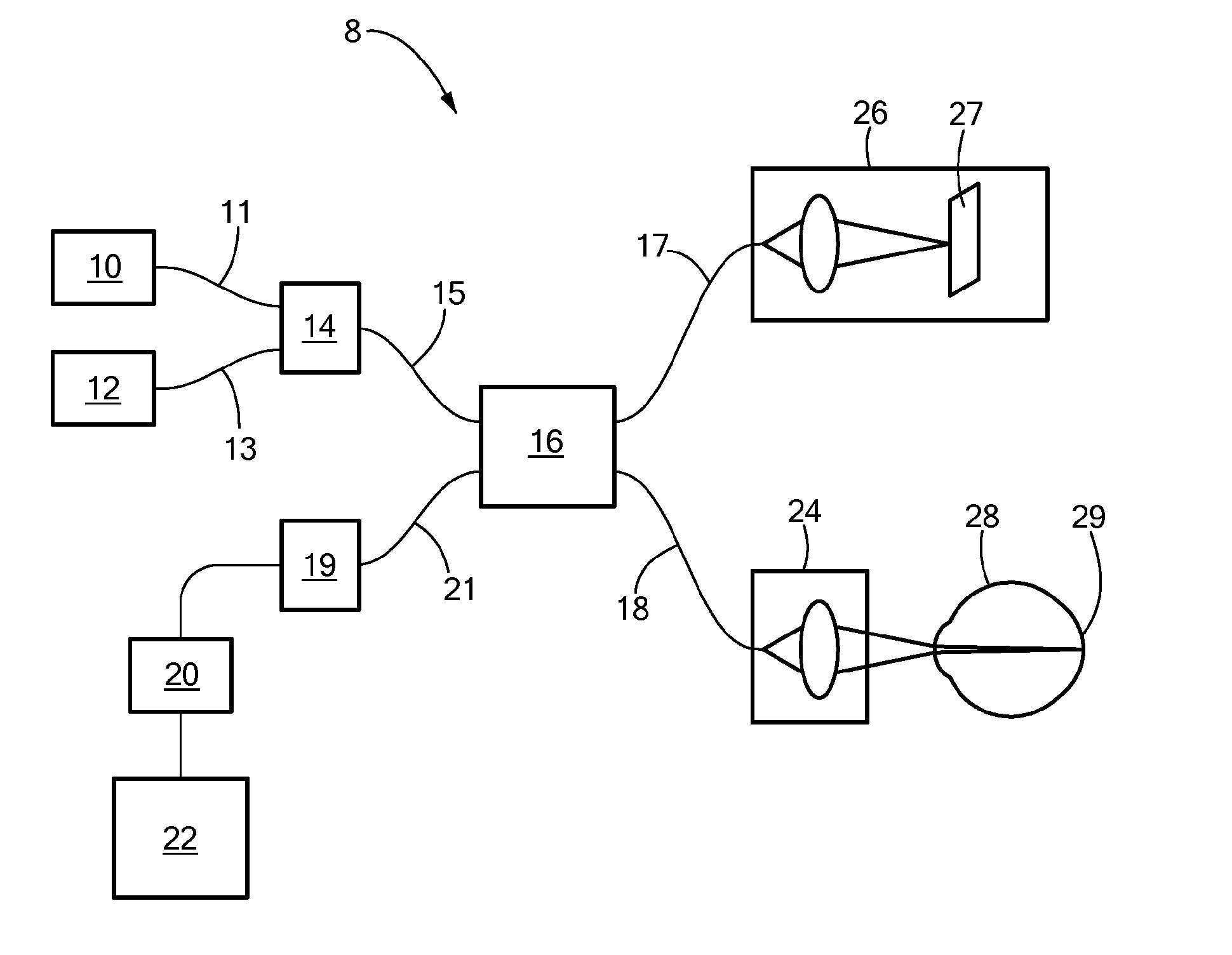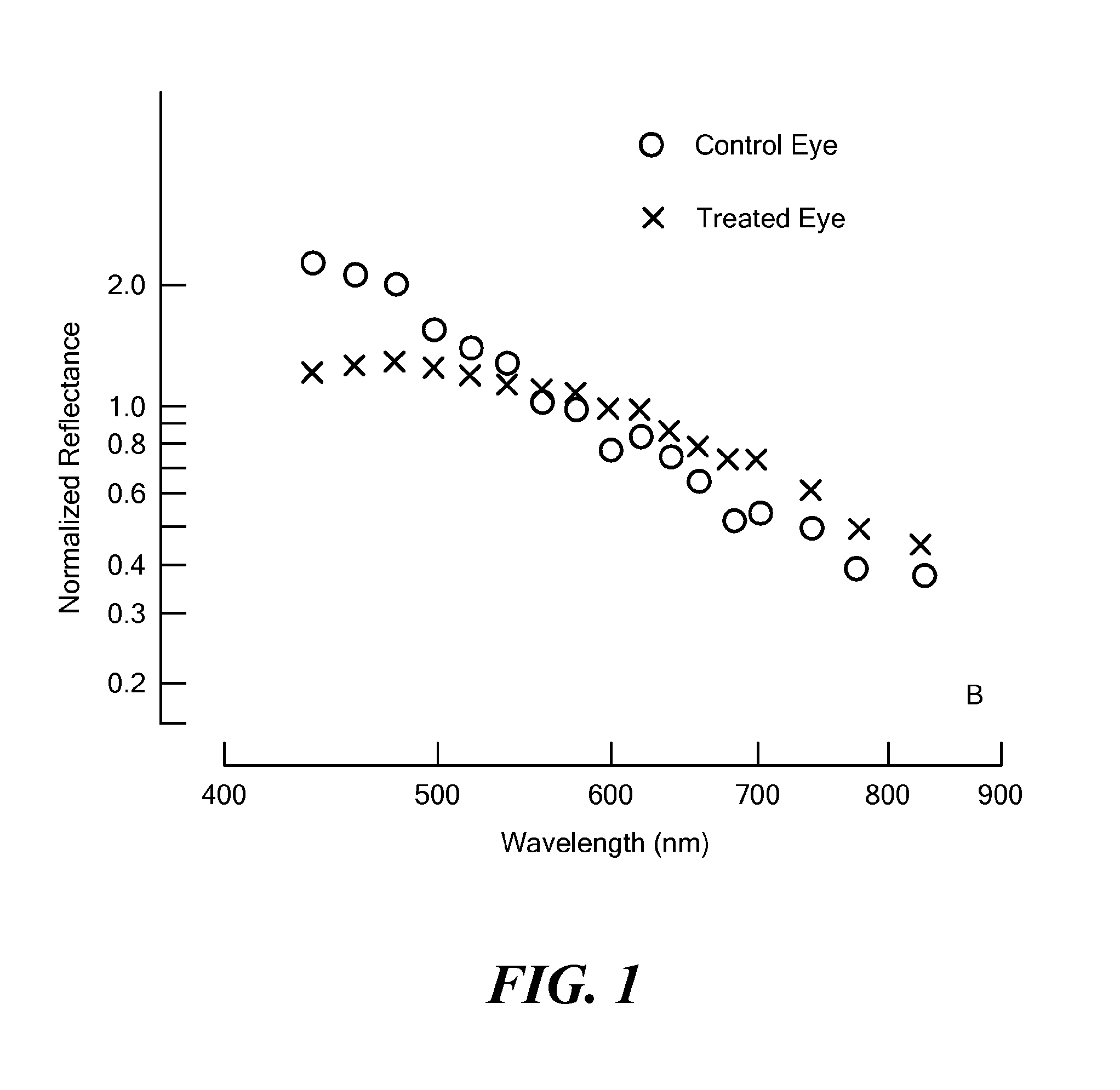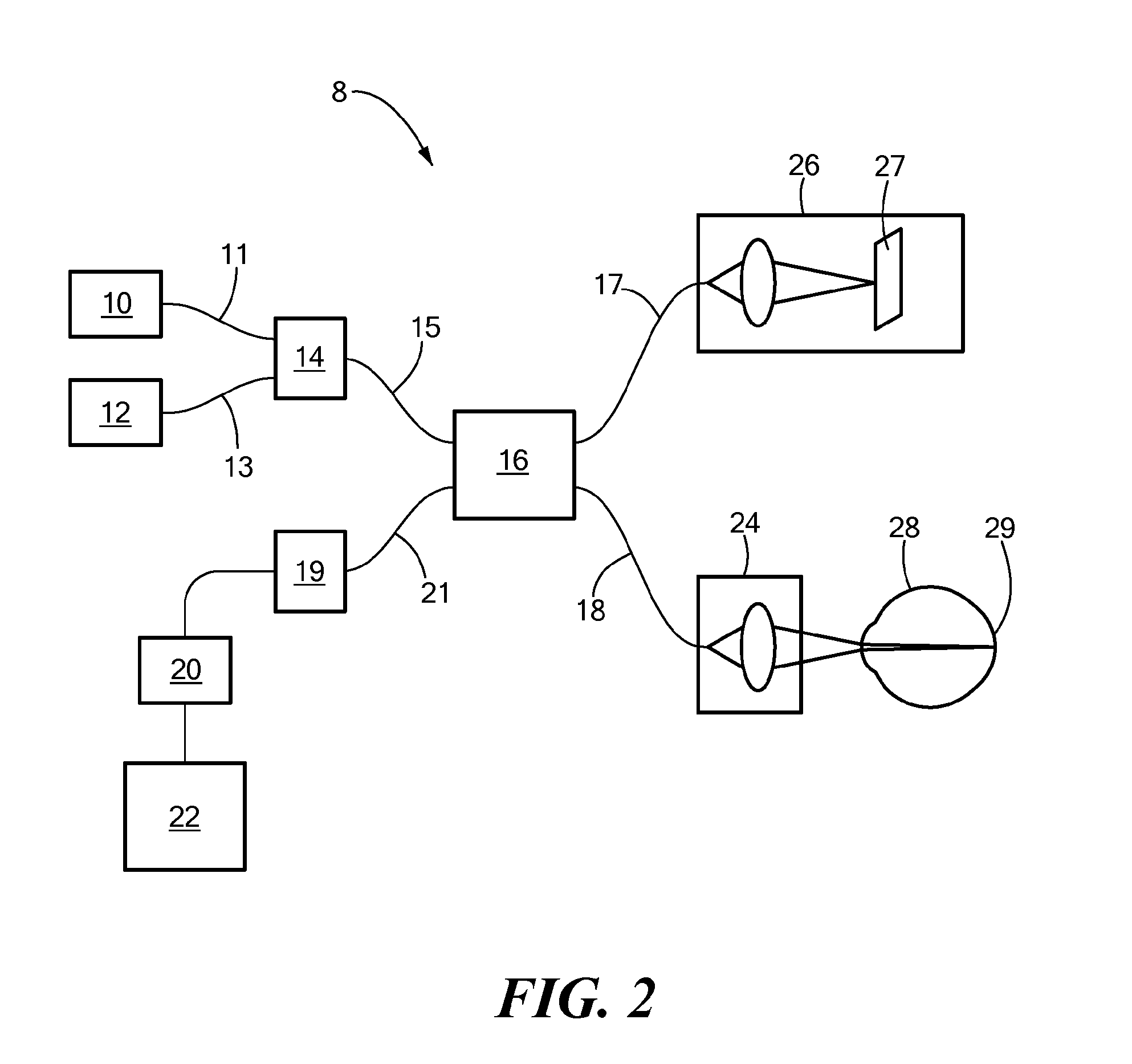Spectral contrast for glaucoma imaging
a glaucoma and glaucoma imaging technology, applied in the field of spectral contrast for glaucoma imaging, can solve the problems of optic nerve fiber microscopic damage that is difficult to detect in vivo, cannot be restored, and cannot be seen
- Summary
- Abstract
- Description
- Claims
- Application Information
AI Technical Summary
Problems solved by technology
Method used
Image
Examples
Embodiment Construction
[0020]The present invention advantageously provides a method and system for early stage detection of glaucoma comprising a dual-band optical coherence tomography (OCT) system that utilizes both short and long wavelengths of light to detect early damage to the RNFL. The method also includes an OCT wavelength contrast method to discriminate between the RNFL and surrounding tissue, which improves the detection of RNFL tissue loss in advanced glaucoma disease.
[0021]The present invention also provides for a method of measuring retinal tissue loss resulting from glaucoma by calculating the spectral reflectance from a dual-band OCT. The measured spectral reflectance data may then be correlated to reveal tissue loss resulting from glaucomatous optic neuropathy.
[0022]The reflective properties of the RNFL differ from those of surrounding tissue. Specifically, a healthy RNFL exhibits relatively high reflectance of visible light. This increased reflectance by the RNFL of visible light, ranging ...
PUM
 Login to View More
Login to View More Abstract
Description
Claims
Application Information
 Login to View More
Login to View More - R&D
- Intellectual Property
- Life Sciences
- Materials
- Tech Scout
- Unparalleled Data Quality
- Higher Quality Content
- 60% Fewer Hallucinations
Browse by: Latest US Patents, China's latest patents, Technical Efficacy Thesaurus, Application Domain, Technology Topic, Popular Technical Reports.
© 2025 PatSnap. All rights reserved.Legal|Privacy policy|Modern Slavery Act Transparency Statement|Sitemap|About US| Contact US: help@patsnap.com



